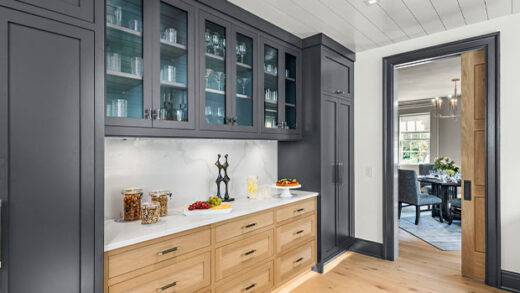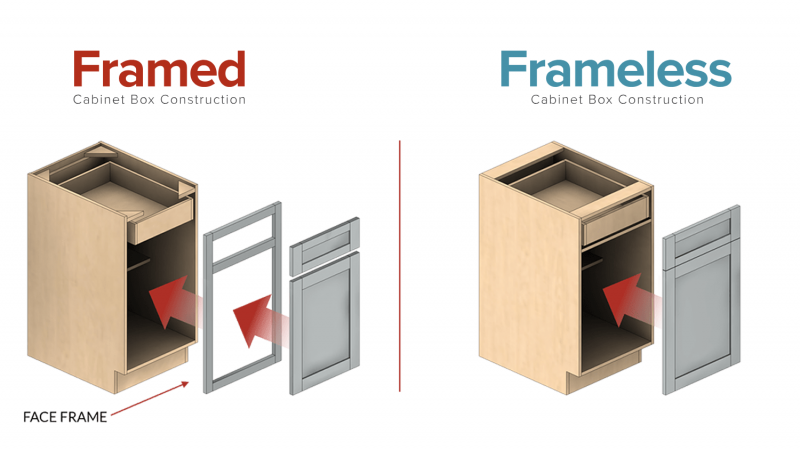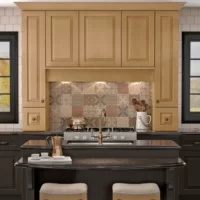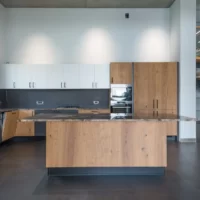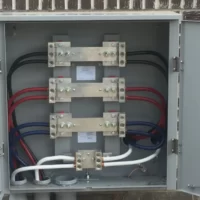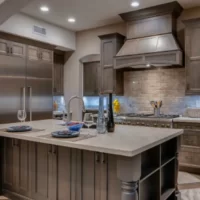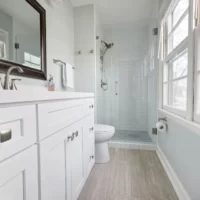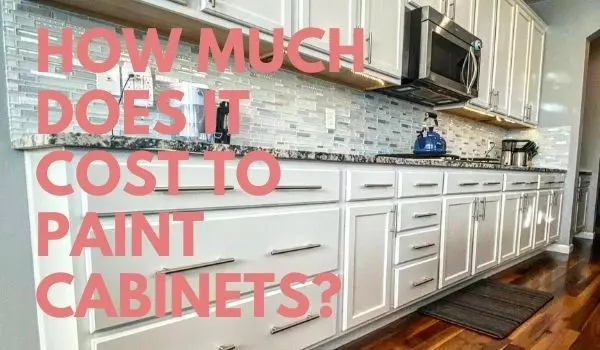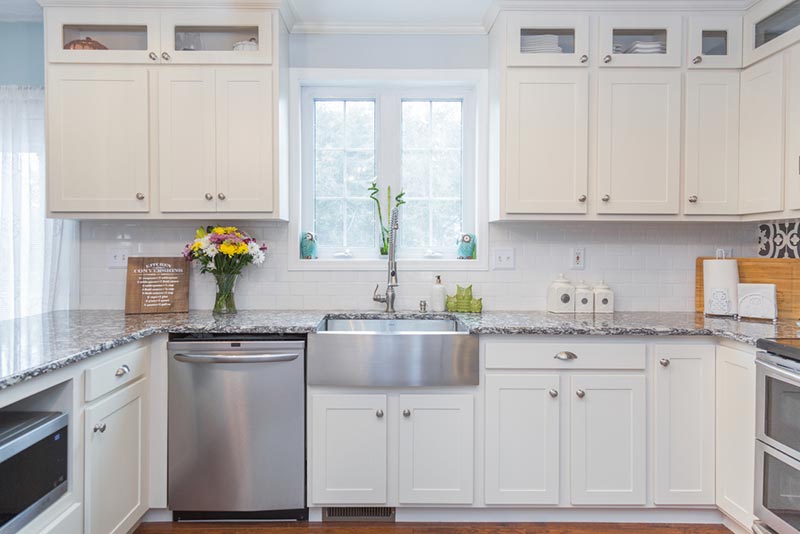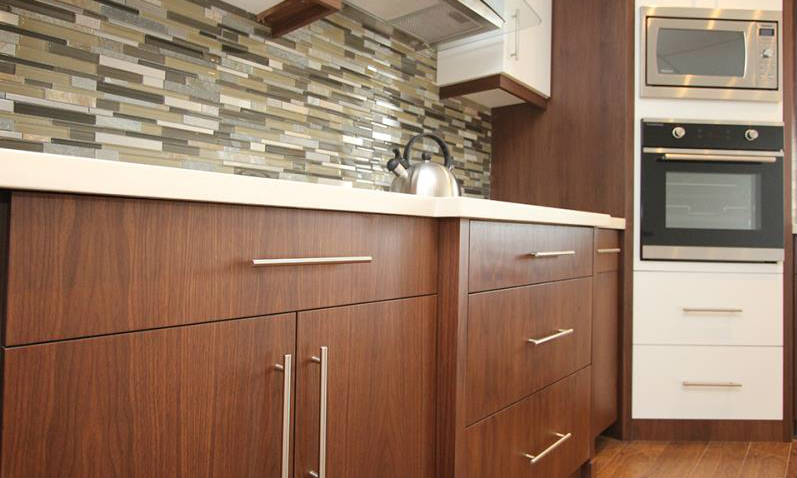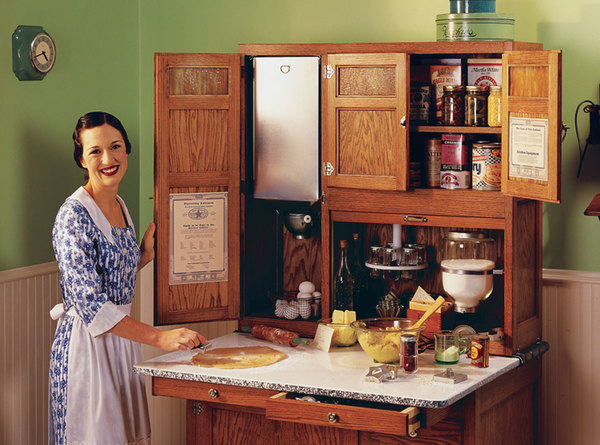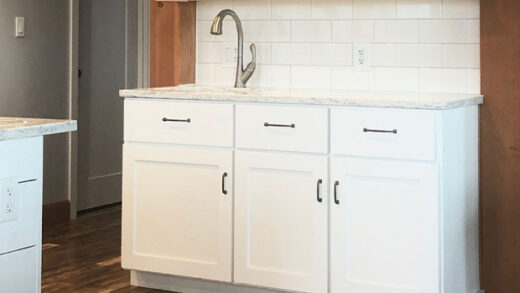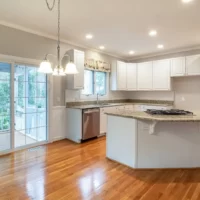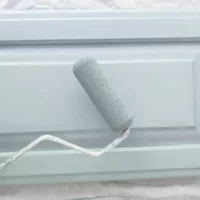Using a high-quality, simple-to-use paint sprayer, you can paint your kitchen cabinets with clean, consistent results.
When choosing a tool for spray painting, many factors need to be taken into account. Before starting a project for cabinet spray painting, it is important to consider the different makes, models, and types of sprayers as well as the volume of the project.
Best paint sprayers for cabinets help provide a very smooth finish that other types of painting simply cannot reach.
Our buying guide, which provides all the crucial details you could possibly need on this incredibly useful tool, is located after our in-depth reviews. The top 7 options have been chosen for your reference.
Table of Contents
Top Pick Quick List
- 1. Best Overall: Wagner Spraytech 0529091 FLEXiO 5000 Paint Sprayer
- 2. Runner Up: Graco 17D889 TrueCoat 360 Handheld Paint Sprayer
- 3. Best Airless: Graco Magnum 262800 X5 Stand Airless Paint Sprayer
- 4. Best Hvlp: Wagner Spraytech 0518080 HVLP Paint Sprayer
- 5. Best Spray Gun: Fuji Spray 5175G – T75G Gravity Spray Gun
- 6. Best Budget Paint Sprayer: REXBETI Ultimate 750 Paint Sprayer
- 7. Final Pick: NEU Master Cordless HVLP Paint Sprayer
Best Paint Sprayers for Cabinets Reviews
1. Best Overall: Wagner Spraytech 0529091 FLEXiO 5000 Paint Sprayer
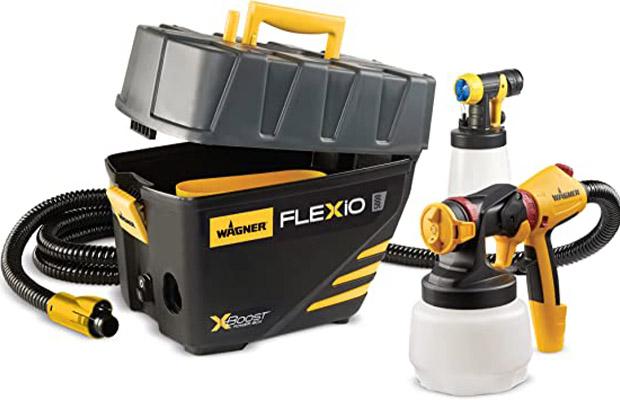
A sprayer should be able to paint cabinets with good coverage, control, accuracy, and little overspray. With this 600-watt Wagner HVLP sprayer, you get exactly that. With a 1-quart paint capacity, the Spraytech Flexio has a variety of adjusters that let you quickly alter pattern width and direction, flow control, and power.
Some paint sprayers contain both the paint and the compressor, which makes them awkward to handle and tiresome to use for extended periods of time. Wagner makes the sprayer lighter by enclosing the motor in a turbine that is housed in a separate base and connected to the sprayer via a hose. The stationary base serves as a practical container for storing the sprayer and attachments.
Pros
- Lightweight and portable
- Material flow and pressure adjustment
- Detail finish nozzle included
- Base doubles as a storage bin
Cons
- May not be suitable for painting large areas
2. Runner Up: Graco 17D889 TrueCoat 360 Handheld Paint Sprayer
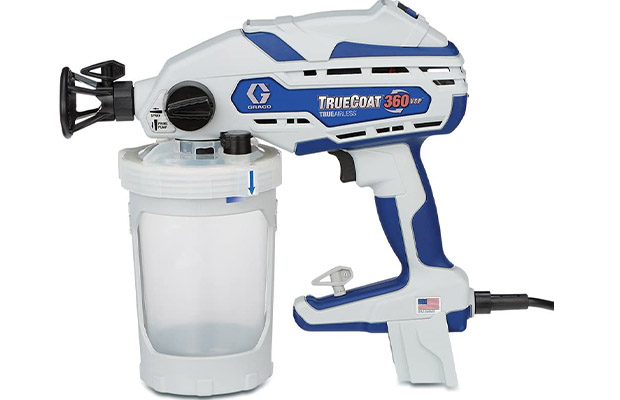
Working with a handheld paint sprayer can be frustrating for users because of the annoyances of thinned paint, clogged nozzles, maintaining accessories, and cleaning the sprayer for color changes. With solutions that increase convenience while quickening the process, the Graco TrueCoat addresses these problems.
A strong steel piston pump that produces plenty of pressure for spraying unthinned paint is a feature of the Graco TrueCoat. Fixing clogs is simple with a reversible nozzle: simply flip the nozzle over to resume painting. Color changes are also simple with disposable bag liners—just switch the bag and you’re ready for the new shade. A handy storage case keeps the Graco paint sprayer and all of its components neatly together until the next job.
Pros
- Reversible nozzle
- Includes disposable bag liners
- Comes with a storage case
Cons
- Some users reported that rolling is required after spraying
3. Best Airless: Graco Magnum 262800 X5 Stand Airless Paint Sprayer
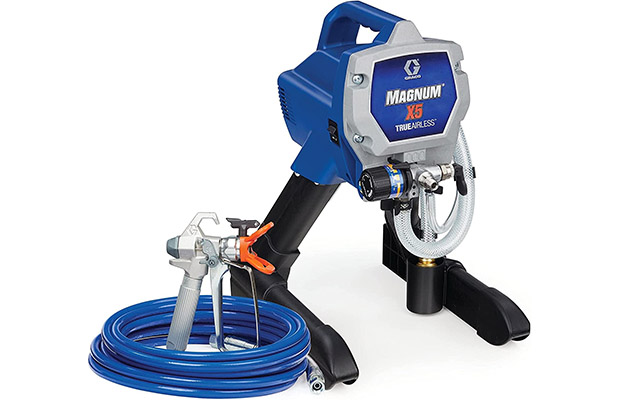
You can’t be stopping every 30 minutes to refill the bucket, clean the nozzle, or thin the paint when you only have a weekend to paint all of your kitchen cabinets. The airless paint sprayer from Graco can handle large jobs due to its strong compressor and capability to spray paint directly from the bucket.
Its robust steel piston pump is capable of dispensing thickened paint. Instead of a bucket attachment that needs to be refilled, a suction tube transfers paint directly from the can to the sprayer, allowing you to continue working uninterrupted. Simply turn the nozzle backwards to unclog it if it becomes clogged.
A hose attachment that allows you to run water through the lines makes cleanup simple as well. Large projects like a complete kitchen remodel or painting a backyard fence benefit greatly from the Graco Magnum.
Pros
- Suitable for large projects
- Reversible nozzle
- No bucket attachment; suction tube delivers paint to the sprayer
- Built-in carrying handle
Cons
- Heavier compared to other options
4. Best Hvlp: Wagner Spraytech 0518080 HVLP Paint Sprayer
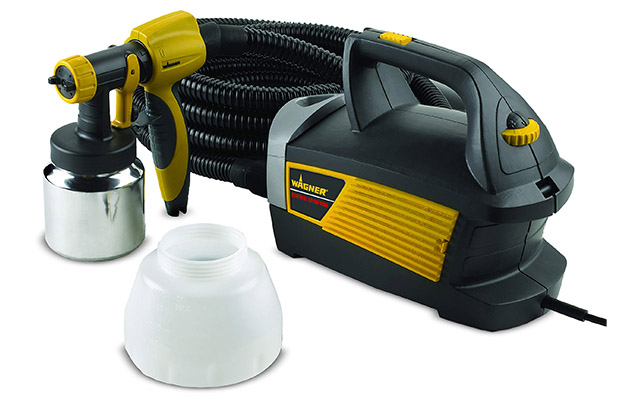
Spraying cabinets requires some skill and a sprayer that will give you enough control to produce a quality finish because there are panels, trim, and cutouts to negotiate. With the Wagner Spraytech, you can adjust the spray width from 1/2 inch to 12 inches. You can fine-tune the amount of paint you’re spraying to suit the material and desired finish with pressure control and flow control dials.
Less mess and less overspray result from minimal overspray. A separate hydraulic pump that is connected to the sprayer via a hose powers the device, which lessens the load on the arms and helps prevent arm fatigue.
Pros
- Adjustable spray width of ½-inches to 12 inches
- Pressure and flow control
- Separate hydraulic pump limits arm fatigue
Cons
- Not suitable for large projects
5. Best Spray Gun: Fuji Spray 5175G – T75G Gravity Spray Gun
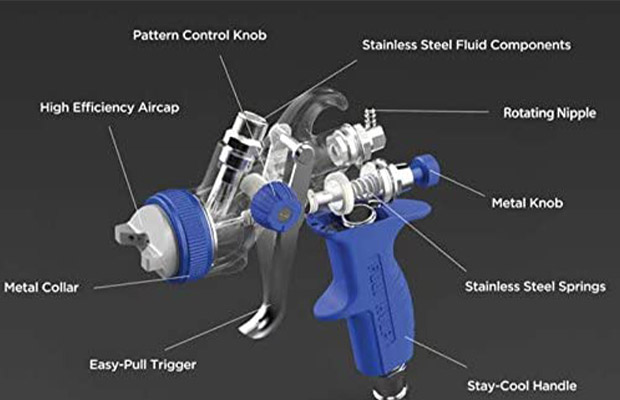
Pro-level performance is provided by this Fuji precision sprayer. Because the sprayer is made of stainless steel, fewer clogs will occur while using it and cleanup after the project will be simpler. With little overspray, a fine finish is possible thanks to an adjustable aircap and pattern control knob.
Additionally, Fuji’s sprayer is well balanced, which helps to reduce fatigue brought on by top-heavy gravity-style spray guns. This is a high-end sprayer that is considerably more expensive than other models, making it a good choice for professionals or the serious do-it-yourselfer who intends to take on additional tasks after finishing the kitchen cabinets.
Pros
- Suitable for professional use
- Pattern control knob
- Adjustable air cap
- Lightweight build
Cons
- Premium pricing
6. Best Budget Paint Sprayer: REXBETI Ultimate 750 Paint Sprayer
The REXBETI Ultimate 750 Paint Sprayer is the best affordable paint sprayer on this list.
Since it’s one of the most reasonably priced paint sprayers available while still producing a high-quality finish, we’ve included this one on a number of our previous lists.
For a paint sprayer that only costs around $55, it is remarkably durable and versatile. It also comes with 4 different spray tips.
The REXBETI is a great option if you don’t want to spend a lot of money on a higher quality paint sprayer but still want to finish your kitchen cabinets beautifully!
Pros
- Quick-release head
- 3 different spray head patterns
- Extra-long power cord with a lightweight body
Cons
- Not the highest quality for long-term use
- Not as good at spraying higher viscosity materials
7. Final Pick: NEU Master Cordless HVLP Paint Sprayer
This NEU Master cordless HVLP paint sprayer is our top pick.
This spray gun is the solution if you’re looking for something that is incredibly simple to use and learn.
This HVLP sprayer is completely cordless and battery-powered, making it a fantastic choice for projects like painting cabinets where you need to move it around and find new angles constantly.
It’s perfect if you’re new to paint sprayers and want something that is easy to learn and amazingly affordable for the level of quality it offers, even though it’s not ideal for larger painting projects (because of the battery life).
Pros
- Ergonomic Soft-Grip Handle
- Cordless for ease of use
- 3 different nozzle sizes
Cons
- Clogs with thicker fluids or latex paint
- Requires battery to be charged because it’s cordless
Types of Paint Sprayers
There are four different types of paint sprayers, each with unique benefits for painting kitchen cabinets.
Conventional/Compressed Air
The conventional version of these devices, a compressed air paint sprayer, uses a spray gun connected to a pressurized tank via a high-pressure hose to apply paint in thin coats.
Renting a conventional air sprayer might be the most cost-effective choice because they can cost more than $1,000. A smooth, polished finish is produced by this type of sprayer, which makes it perfect for kitchen cabinets. The results look and feel great, even though you’ll need to apply more coats than you would with other sprayers.
A conventional compressed air sprayer requires some getting used to. These devices have a strong air compressor and have a tendency to produce a lot of overspray, which can make them challenging to control. Fortunately, spray guns can be equipped with nozzles of various sizes to enhance the spray pattern and flow. An excellent tool for refinishing kitchen cabinets once you get the hang of using one is a compressed air paint sprayer.
HVLP
Paint is applied with the help of a small internal electric turbine in High Volume Low Pressure (HVLP) paint sprayers. Since HVLP sprayers start at less than $100, they are the most cost-effective sprayers and are therefore preferred for DIY painting projects. HVLPs are insufficient for large jobs but perfect for smaller ones, such as painting kitchen cabinets, because they have a lower output than compressed air sprayers.
This kind of sprayer makes precise painting much simpler while generating the least amount of overspray and applying small amounts of paint at a time. Some models can’t handle thicker paint, so you must first thin it with water before applying it. HVLP sprayers use air caps to deliver paint instead of spray tips, which are used by compressed air spray guns to control flow, spray pattern, and paint thickness. An HVLP sprayer can still produce excellent results even though they might not produce a finish that is as smooth as one produced by a traditional compressed air sprayer.
Airless
The most potent type of paint sprayer is airless, which is powered by an electric motor. They work by forcing paint out of a tip through a hose at a pressure of up to 3,000 PSI, dilating it into tiny droplets, and then pumping the paint back in. They create thick paint coats, which reduces the amount of coats you’ll need to apply and, ultimately, saves time. Airless paint sprayers include a variety of tips for different spray patterns, just like traditional air sprayers do.
Airless paint sprayers have a lot of force behind them, which results in a lot of overspray. These robust sprayers are ideal for large painting projects like fences, interior walls, and home exteriors but may be overkill for smaller indoor projects like painting kitchen cabinets.
A smaller tip, such as a 311 size, and a 12-inch buffer between the sprayer and the cabinet while painting are required for airless paint sprayers to produce a smooth finish. This prevents the application of an excessively thick coat. For those who intend to use a paint sprayer for numerous projects, airless paint sprayers are a good choice.
LVLP
Low Volume Low Air Pressure (LVLP) paint sprayers use an air compressor and hose to power a spray gun, similar to compressed air sprayers. The distinction is that LVLPs only need between 3 and 10 pounds per square inch (PSI) to function. As a result, they will utilize smaller, weaker air compressors.
LVLP sprayers create smaller spray patterns than traditional air sprayers, similar to HVLP sprayers. While this means it will take longer to paint a kitchen cabinet, LVLP sprayers produce very little overspray, allowing for more precise painting and little waste. However, because they apply less pressure, some sprayers might necessitate the dilution of thicker paints with water in order to avoid clogging. For those who already have an air compressor, LVLP sprayers are an excellent choice.
More Paint Tools: Best Paint Brush For Cabinets
What to Consider When Choosing the Best Paint Sprayer for Cabinets
Knowing what features and factors to look for when looking for the best paint sprayer for cabinets and furniture is just as important as knowing the different types of paint sprayers that are available.
Tip Size
Airless paint sprayers use a tip that diffuses the paint as it leaves the sprayer, as opposed to HVLP sprayers, which use adjustable air caps to control spray pattern and size. The tip size determines the size and shape of the spray pattern as well as how much paint is delivered. A good finish and the avoidance of annoying clogs depend on selecting the proper tip size.
A three-digit code is used to identify tip sizes. The fan tip will apply a spray that is 12 inches wide when it is 12 times the first number multiplied by two. The second and third numbers specify the orifice size to the nearest thousandth of an inch. A 425 tip, for instance, has a opening that is 25 thousandths of an inch and will apply an 8-inch wide fan of paint from 12 inches away.
Spray tips between.025 and.035 are needed for viscous enamels and primers. A tip that is either too small or too large can cause clogs or excessive overspray. Replace paint sprayer tips between projects because they will eventually lose their size due to wear and tear.
Project Size
The size of your project is crucial when choosing a paint sprayer because different sprayers can apply different amounts of paint. The use of a sprayer that is too powerful for the task at hand will result in excessive overspray, which will leave the work area messy, the finish will be subpar, paint will be wasted, and the amount of overspray released into the air will make the working environment potentially dangerous. The best choice is low-volume, portable paint sprayers because they are less expensive and simpler to use.
Manual Vs. Electric
Both compressed air and an electric pump are used to power paint sprayers. Both are good and bad. When it comes to adjusting the spray intensity, compressed air wins out for the following reasons:
- Compared to electric paint sprayers’ pumps, compressed air releases can be adjusted more precisely.
- An electric pump-operated sprayer will stop moving paint once the reservoir is too low, forcing you to manually clean significant amounts of paint out of the lines. In contrast, air-powered sprayers are simple to clean because most of the paint is cleared out of the lines by the air.
- Compared to electric sprayers, which have a transfer rate of just 50%, air sprayers have a 90% transfer rate (the amount of paint that actually reaches the material). The waste and mess will be greatly reduced as a result.
With either type of sprayer, you can get a fantastic finish, but airless paint sprayers have an advantage. Bubbles in the finish can be caused by the mixing of air and paint. An airless sprayer reduces the likelihood of this happening.
Power Rating
The quantity of paint that a sprayer can deliver is significantly influenced by power. A higher output volume is produced with more power. Sprayers with more power can create wider patterns of spray, coating surfaces more quickly.
A kitchen cabinet painting project may not benefit from having too much power, despite the fact that it is advantageous for large projects like painting interior walls or a fence. When comparing electric and air-powered sprayers, different ratings are given to each. The majority of paint sprayers have power outputs between 26 and 29 PSI for paint sprayers and 450 to 800 watts for electric sprayers.
Adjustable Pressure
Paint sprayers have controls that let you change how much pressure is used to force paint through the sprayer. If the pressure is too low, the coating will be uneven, resulting in what’s known as “tails” or “fingers” in the finish. The likelihood of experiencing excessive overspray and misting increases if the pressure is too high.
Use just enough pressure to atomize the coating you’re spraying for top-notch results. The coating’s viscosity will determine how this changes. You need a sprayer that allows you to adjust the pressure in order to get the right pressure.
Capacity
The greater the capacity (i.e., the amount of coating the sprayer can hold), the less often you’ll have to stop and refill. Most HVLP paint sprayers come with plastic or metal cups that attach to the sprayer and hold about one quart of paint. Spray paint guns come with a cup that attaches to the top or bottom of the paintbrush and has a capacity of 20 ounces. The highest capacity is provided by airless sprayers because they draw paint directly from the paint bucket.
Ease of Use
HVLP sprayers are the simplest to use because they have numerous options for adjusting the pressure and are easy to control. They’re ideal for smaller projects like painting cabinets because they produce a negligibly large amount of overspray. Additionally, they are sold as a complete unit, so an additional air compressor is not required to operate an HVLP sprayer.
Despite their superior performance, airless paint sprayers are primarily made for large outdoor projects like fencing and home exteriors. They can generate a lot of overspray, which can make spraying smaller projects difficult and messy.
Like a standard air sprayer, LVLP spray guns are a great option for cabinets because of their adjustability and lower volume output, but they need an air compressor, which could mean making a separate purchase if you don’t already have one.
You May Also Like:
- How To Paint Laminate Cabinets?
- How to Paint Kitchen Cabinets Without Sanding?
- Can You Paint IKEA Cabinets?
Our Verdict
It need not be difficult to select the best sprayer for your cabinets.
Once your cabinets are finished, all of these spray guns will be fantastic tools for a variety of projects and will assist you in finishing the job.
The Wagner Spraytech HVLP sprayer is one of the best alternatives overall. A material flow and pressure adjuster, as well as a detail finish nozzle for touch-ups or small areas, are included with this lightweight model. It also has two nozzles for ample coverage.
The Fuji Spray conventional/compressed air sprayer offers superior performance and the sturdiness of stainless steel for professional applications. This sprayer is lightweight, has an adjustable air cap, and a pattern control knob that prevents arm fatigue.
Read More:
FAQs
How Much Does It Cost to Spray Paint a Kitchen Cabinet?
According to HomeAdvisor, painting kitchen cabinets costs between $385 and $1,118, with the majority of that amount going toward labor. The price of supplies is between $200 and $600.
Related Reading: How Much Does It Cost to Paint Kitchen Cabinets?
What Size of Tip Should I Use to Spray Paint Cabinets?
To get a good finish with little overspray, a small tip works best. A good tip size is a 311 size tip, which will result in a 6-inch fan. If you’re using a sprayer with a cap, set the sprayer so that the fan width is 6 inches.
How Should a DIYer Prepare Kitchen Cabinets for Spray Painting?
Kitchen cabinets should be degreased using TSP (Trisodium Phosphate), a cleaning agent that cuts through grease and grime, as they are so close to cooking and food. Using a good primer after cleaning, paint the cabinets. You can start spraying after lightly sanding the primed cabinets to smooth the surface.
What Do Professionals Use to Spray Cabinets?
We usually use professional-grade lacquer because it has a lovely, silky-smooth feel to it, and is what cabinet manufacturers use. Although there are some fantastic professional-level water-based options as well, in our opinion, it is the best paint for cabinets.
Is Airless Or HVLP Better for Cabinets?
Use an airless sprayer if you are painting a large surface, such as an interior or exterior wall. On the other hand, HVLP sprayers are best suited for small surfaces, like painting furniture, cabinets, or any other job requiring a precise application.

